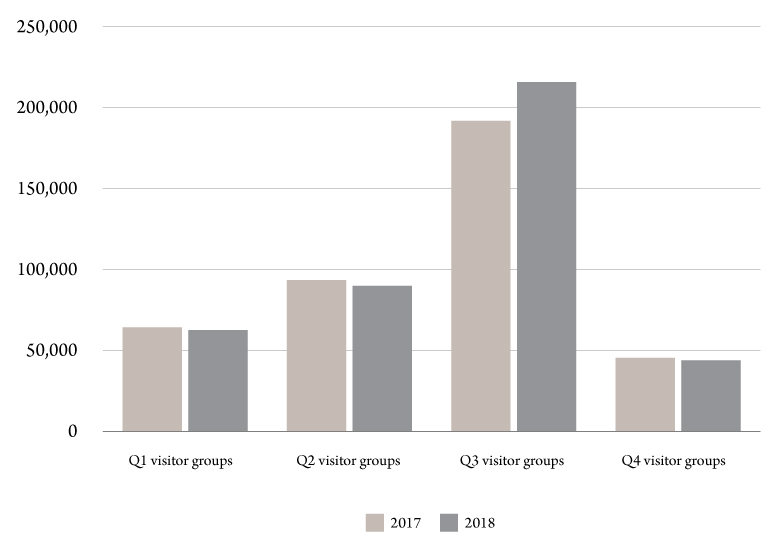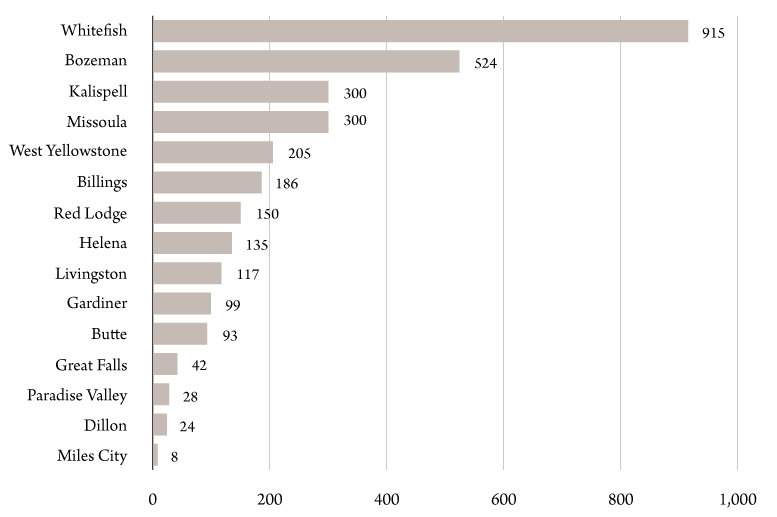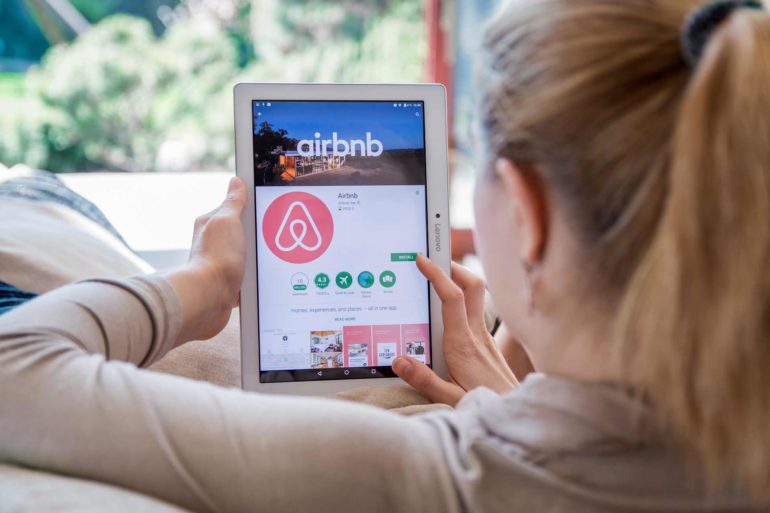In a recent study conducted in Gardiner, Montana, by the Institute for Tourism and Recreation Research at the University of Montana, unsolicited comments from nearly 50 percent of residents exemplified issues in Montana’s affordable housing crisis. Those comments ranged from complaints about high rent to unreasonable housing prices. And while the state battles an affordable housing issue, it’s also seen a surge in short-term rentals.
Short-term rentals, or vacation rentals, are defined as the rental of a home or a room in a home for less than 30 days. Many rentals are on a weekly basis, while some are a few days. Short-term rentals are currently flooding communities like Whitefish, Bozeman, West Yellowstone, Kalispell and Missoula. But smaller communities are seeing it too. Airbnb reported that in 2017, listings in rural locations accounted for 3.3 million guest arrivals in the United States, a 138 percent increase in one year.
Originally short-term rentals were considered a part of the sharing economy, offering travelers a low-cost option to pricey hotels or resorts. But a growing trend has emerged with commercial operators running hoteling schemes, which tend to fracture communities, raise safety concerns and increase the price of rent for residents while depleting affordable housing options.
Demand
Online lodging services that offer short-term rentals, like Airbnb, Vacation Rental by Owner, HomeAway, FlipKey and Evolve, are a sector of the economy that is growing. In 2018, Airbnb celebrated 10 years in business with some impressive statistics:
- More than 5 million listings worldwide.
- 81,000 cities with listings in more than 191 countries.
- 400 million guest arrivals with more than 2 million people staying at an Airbnb each night.
The success of the short-term rental business model is largely due to demand and investment opportunity. Consumer demand for short-term rentals includes a desire for perceived lower prices, the opportunity to interact with local people, the convenience of a home with a kitchen and an “at-home feeling.” Sometimes it can be the novelty of a different type of experience, be it a luxury mansion or a tree house.
In Montana, visitor data shows a 12 percent increase in the use of short-term rentals within the peak summer season between 2017 and 2018 (Figure 1). In 2018, more than 411,000 nonresident groups rented a home or cabin during their stays. And this growth is happening when overall visitation to Montana is flat.

Opportunity
Short-term rentals provide a financial benefit for homeowners – singles with high rent, retirees with empty homes or couples with spare rooms in need of cash have found that their empty spaces can bring income.
Others see short-term rentals as an investment. In Whitefish and Gardiner, the appetite for investments in real estate appears to be a main driver in the rapid increase in the number of short-term rentals. Vacation home owners hoping to cover the costs of owning a second home is another cause. It’s become common for real estate companies in the area to tout the sale of a home or apartment as an income generator.
For investors, short-term rentals offer several reasons to invest: 1) the short-term rental market is growing; 2) income from short-term rentals can sometimes make more money for the owners than long-term leases; 3) revenue from these rentals may cover mortgage payments, allowing for diversification in other investments; 4) owners can deduct mortgage interest and business expenses related to the rental; 5) it’s easy to find renters with online platforms; and 6) owners could have a vacation home to occasionally enjoy themselves.
Impacts and Challenges
On the downside, short-term rentals create a number of issues for communities, including increased home prices, a reduction in workforce housing and affordable housing stock and changes in a neighborhood’s complexion.
Clearly, the home-sharing economy has disrupted traditional markets of rentals and home sales. As landlords switch from long-term rentals (used by residents) to short-term rentals (used by nonresident visitors), this drives up the rental rate and housing prices in the long-term market.
Granted, short-term rentals are not the sole cause of the lack of affordable housing in Montana, but in some areas they can be a factor. In the Whitefish area, there are more than 900 listings for short-term rentals on Airbnb in a town with 7,600 residents (Figure 2).

In 2016, Whitefish conducted a workforce housing needs assessment and found that units occupied by year-round residents dropped nearly 10 percent from 2000 to 2010, with much of the shift attributed to second/vacation home buyers. In addition, more long-term rentals are now limited to a six- to nine-month lease, allowing the owner to do short-term rentals at higher rates during the summer months.
In 2017, a Whitefish Strategic Housing Plan was completed, which included a strategy to convert short-term rentals back into long-term housing. Having grappled with the issue for several years, the town now regulates short-term rentals.
Other Montana communities also have enacted ordinances to limit the growth of short-term rentals. In 2016, the Missoula City Council approved rules for homeowners, which included complying with housing safety codes, limiting the number of guests allowed per square foot and notifying neighbors about their rental status. A $52 registration fee is required for short-term rental owners, along with a $27 yearly fee.
When Bozeman approved similar regulations in 2017, they were much stricter. The city requires a $250 annual fee, a $225 one-time fire inspection fee and up to a $1,500 administrative conditional permit fee. All of these communities require the owner to submit the lodging facility use tax to the state, as well as a county health accommodations license.
These types of regulations are an attempt to curb the tide and negative impact short-term rentals can have on communities. One solution used by Whitefish is their use of tracking software to understand the number and location of these short-term rental units. This provides the community with information to help them manage the proliferation of short-term rentals.
Clearly, Montana is dealing with an affordable housing issue, and short-term rentals are not helping matters. But the hope is that Montana’s towns and communities can stay affordable for year-round residents while offering a variety of lodging options for visitors.


